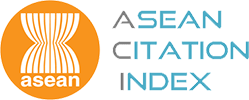The Level of Efficiency in Handling Container Traffic at Penang Port: A Simulation Study
Abstract
The six-month period (January 1995 - June 1995) data was extracted from "Pelabuhan Kontena" (PELKON) system and tested using SIMAN simulation process. Among the data available from the PELKON system are: arrival time of a ship, departure time of a ship, operation time for loading and unloading, total number of equipment used, number of containers unloaded, number of containers loaded, size of a ship, country of registration, last port of call, and next port of call. The arrival pattern of large ships (having a capacity to carry 507 or more containers) and small ships (having a capacity to carry less than 507 containers) follows Weibull distribution and Log-normal distribution, respectively. As a whole, there is no significant differences between the number of ships recorded by the PELKON data and the simulation process. A number of experimental studies such as acquiring less Port Crane, improveÂment of management service and integrated Prime Mover operation have been carried out to determine the effect on the container handling operations. The findings show that when one of the four port cranes did not work, the number of export containers decreased by 14.2% and 11.5% for import containers, If the services had been upgraded by 25%, the average time for unloading export containers could be shortened by 27.1% and the average time for loading import containers could be reduced by 7.9%. If the movement of prime movers had been integrated, the handling of export containers could be upgraded by 8.0% and 4.3% for import containers.
Downloads
Download data is not yet available.
Additional Files
Published
01-12-1999
How to Cite
Saleh, A. R., & Mat Tahar, R. (1999). The Level of Efficiency in Handling Container Traffic at Penang Port: A Simulation Study. Malaysian Management Journal, 3(2), 93–100. Retrieved from https://e-journal.uum.edu.my/index.php/mmj/article/view/8567
Issue
Section
Articles









